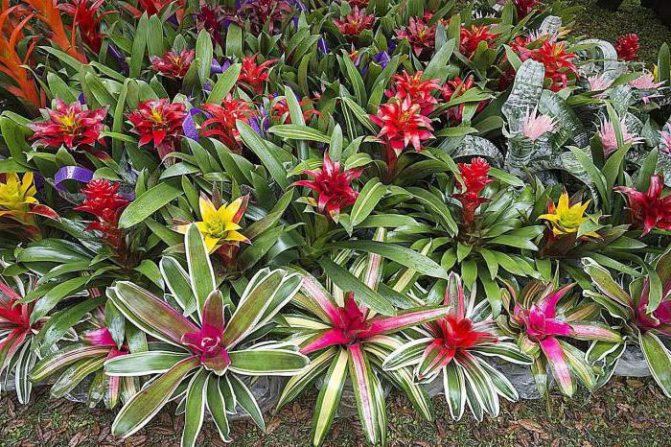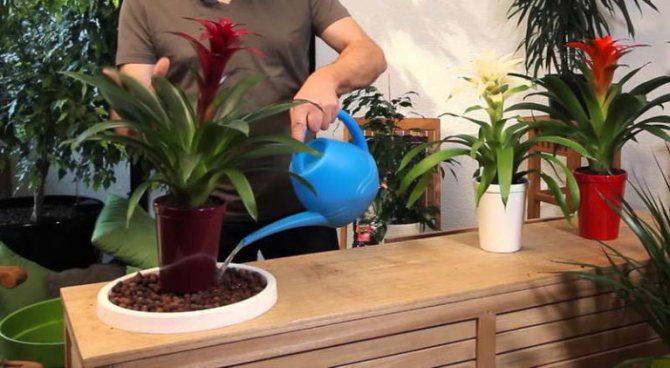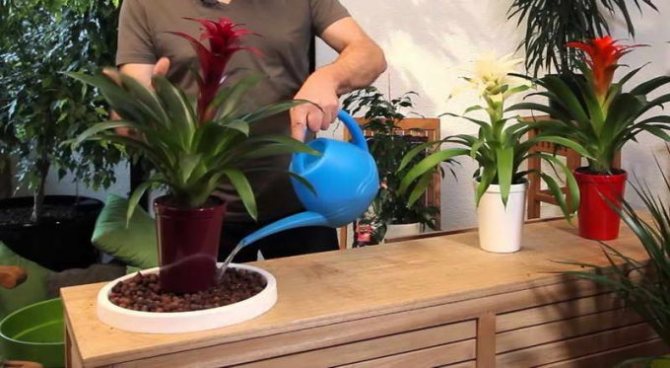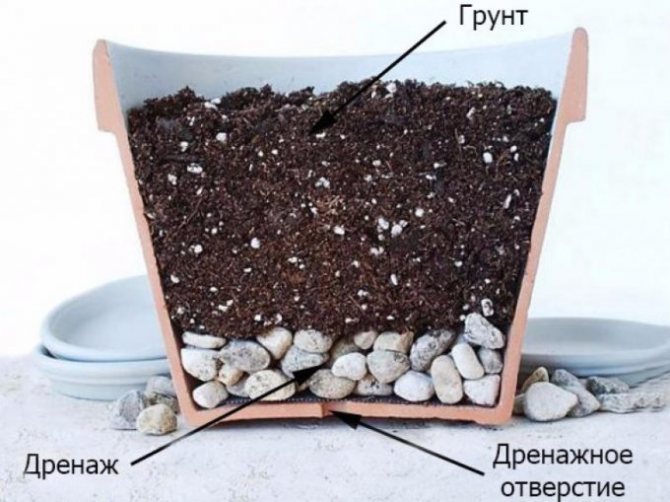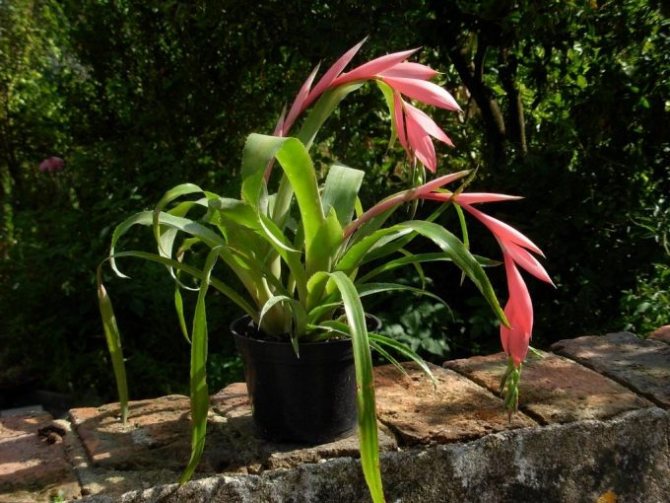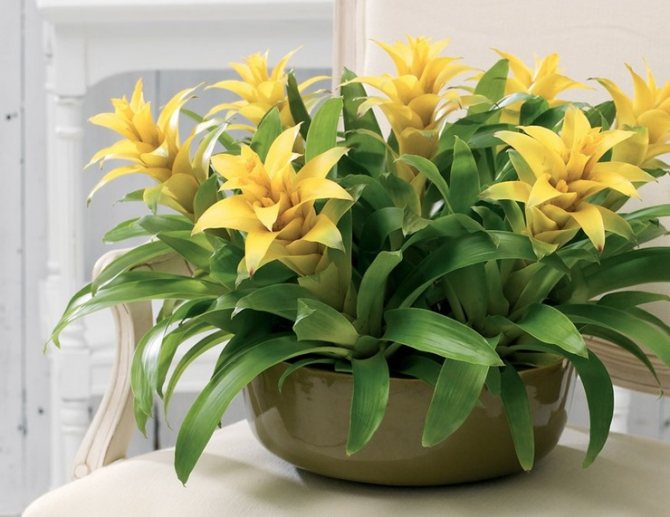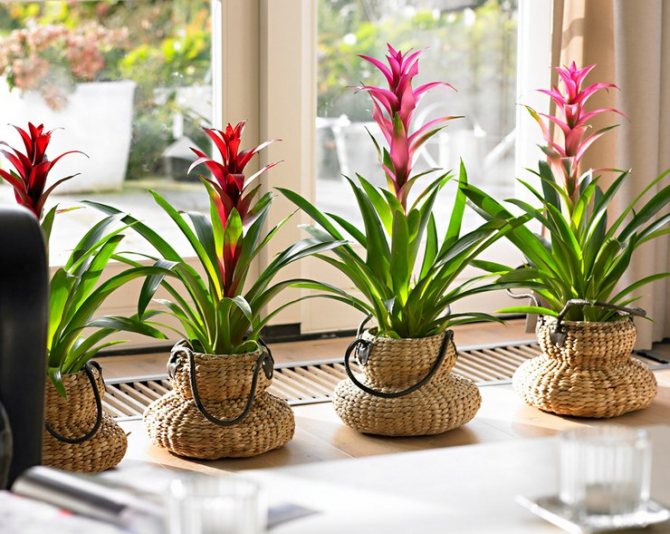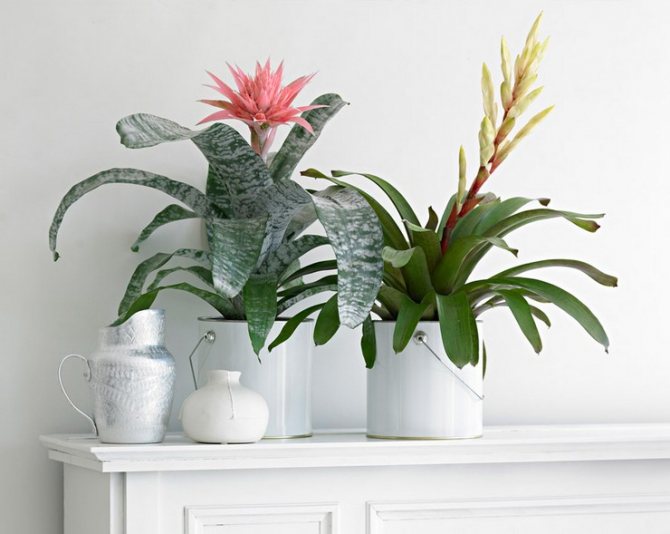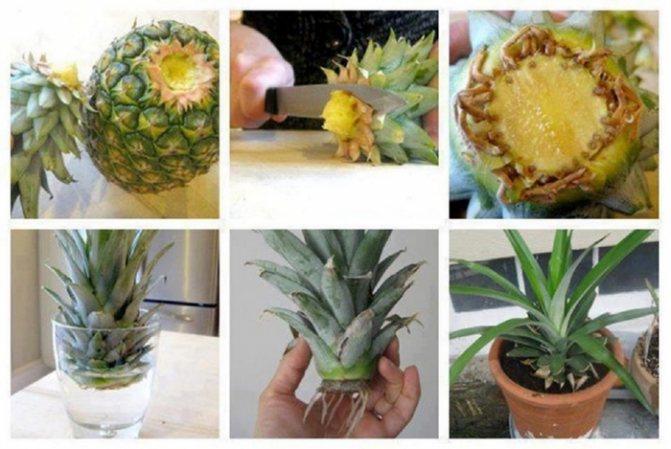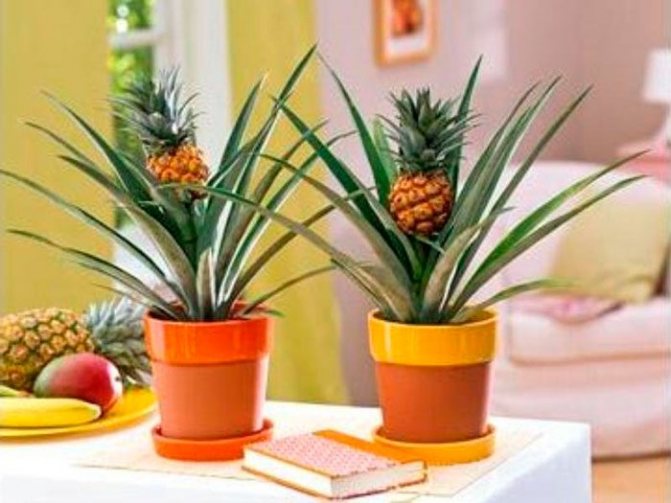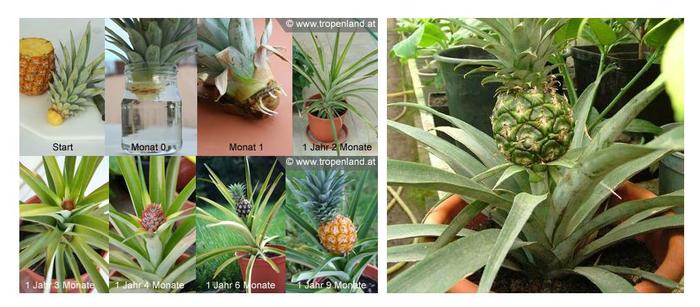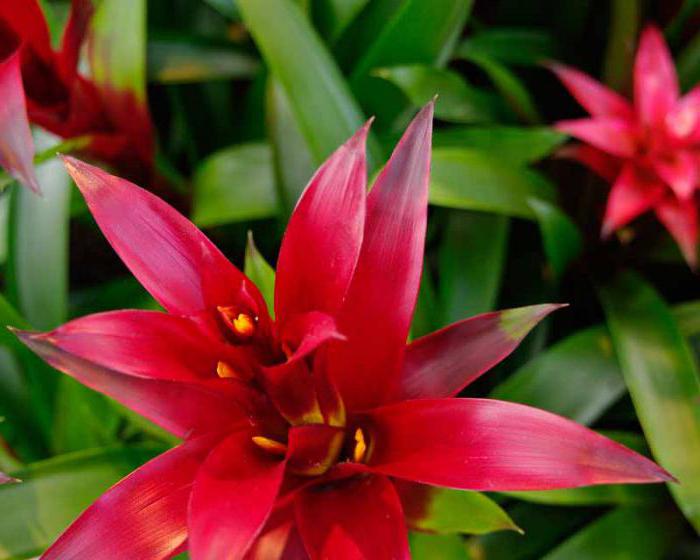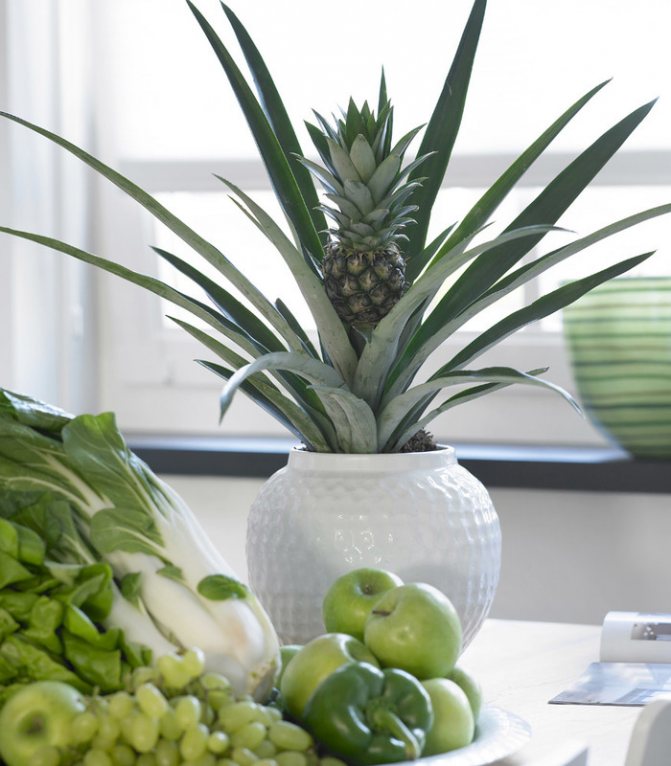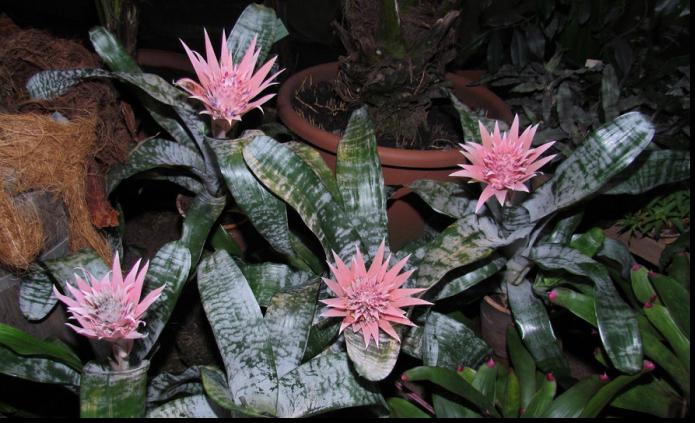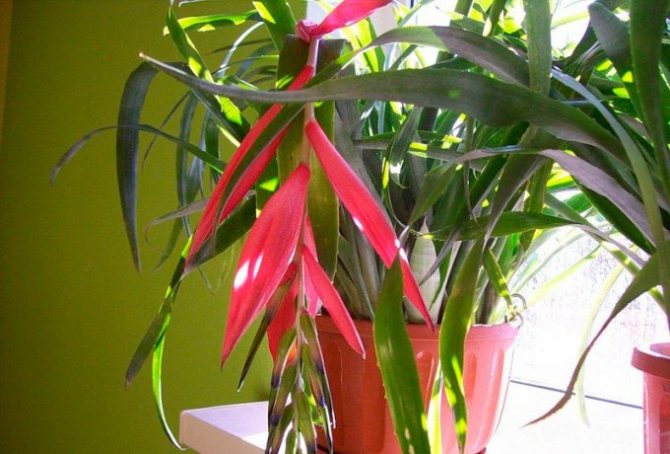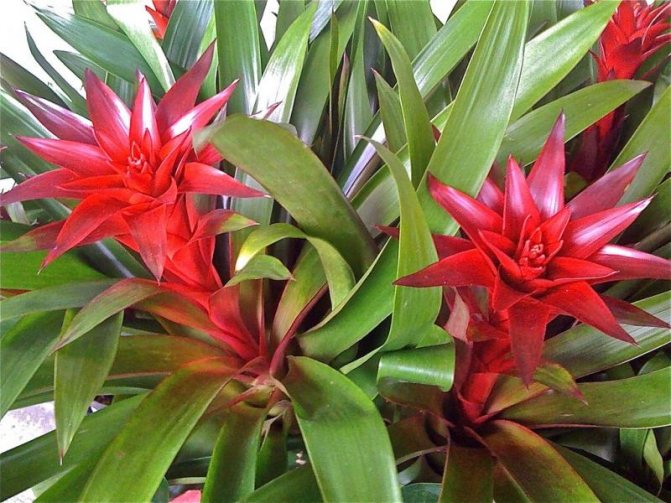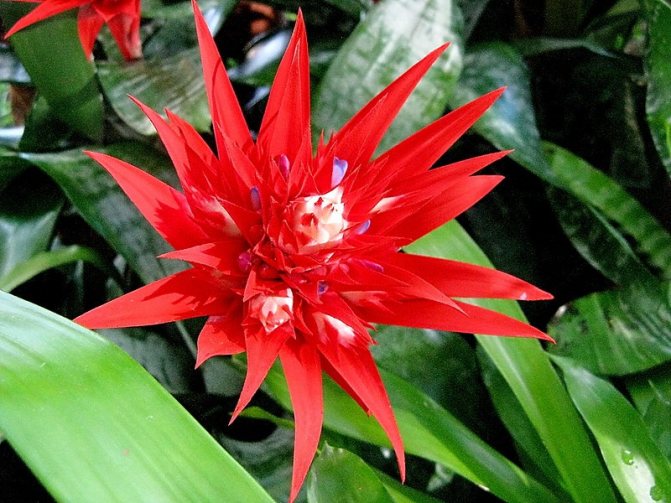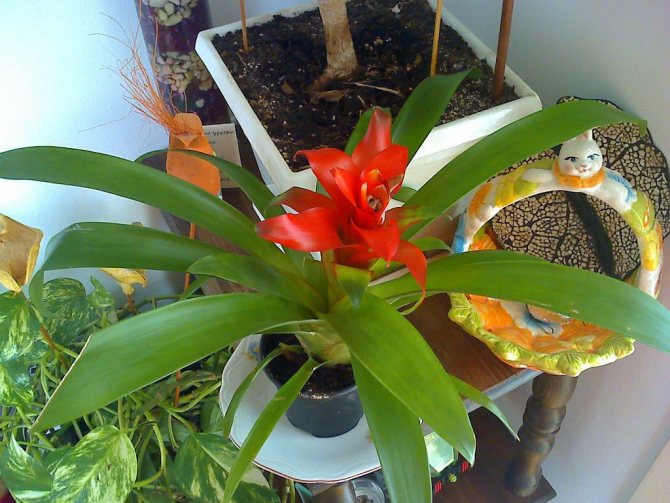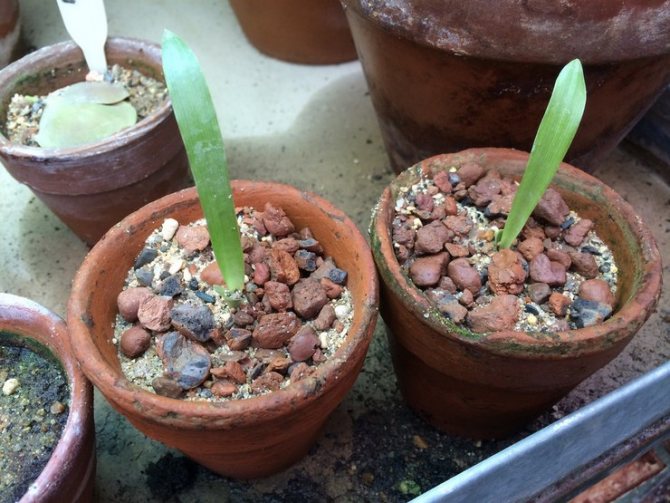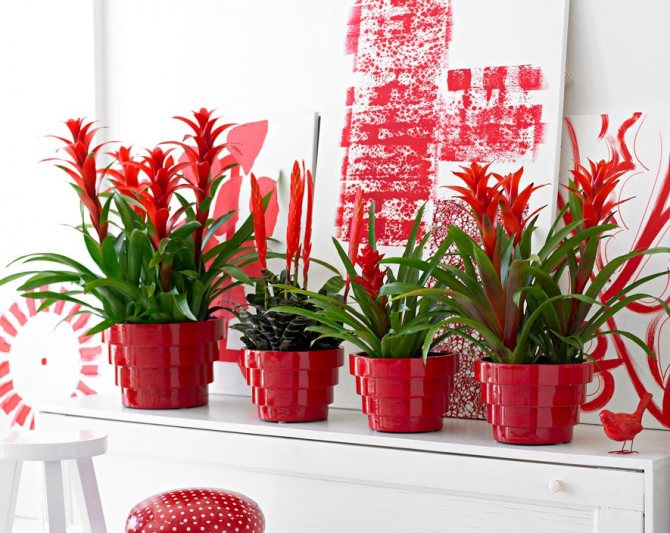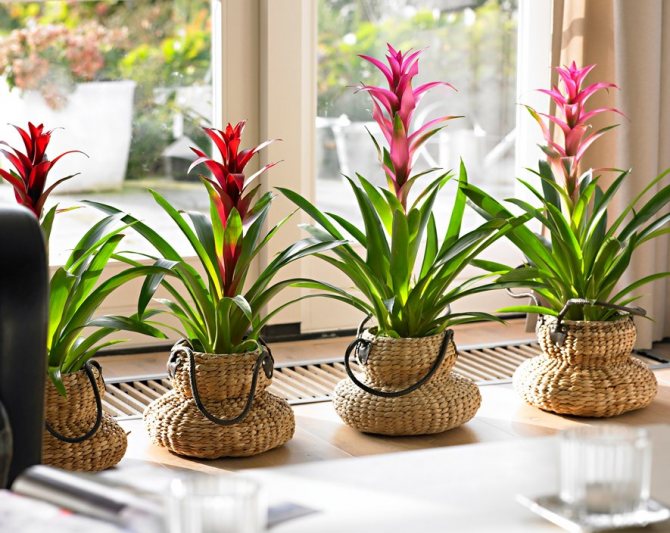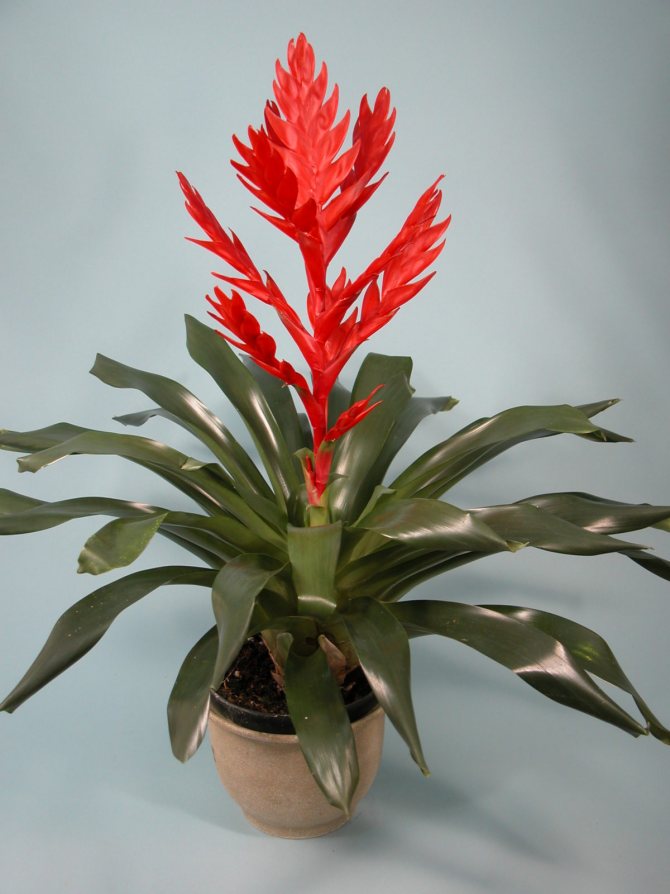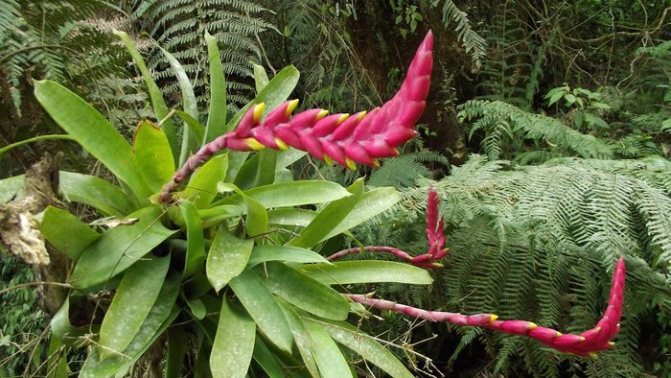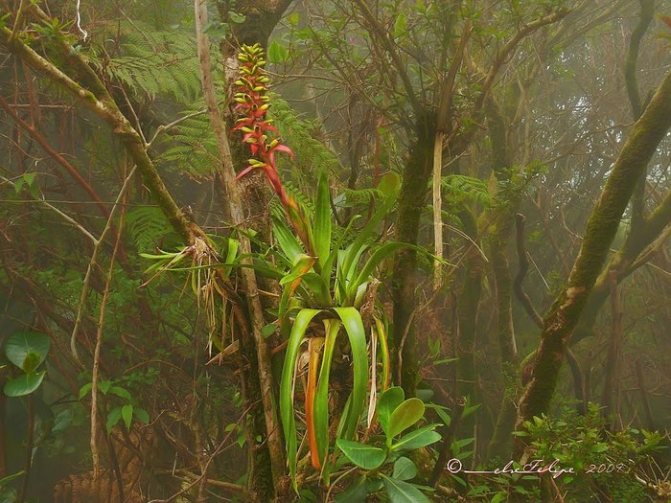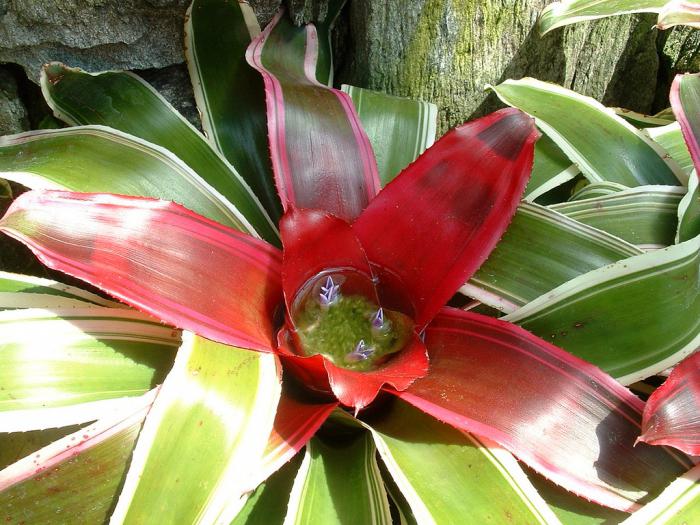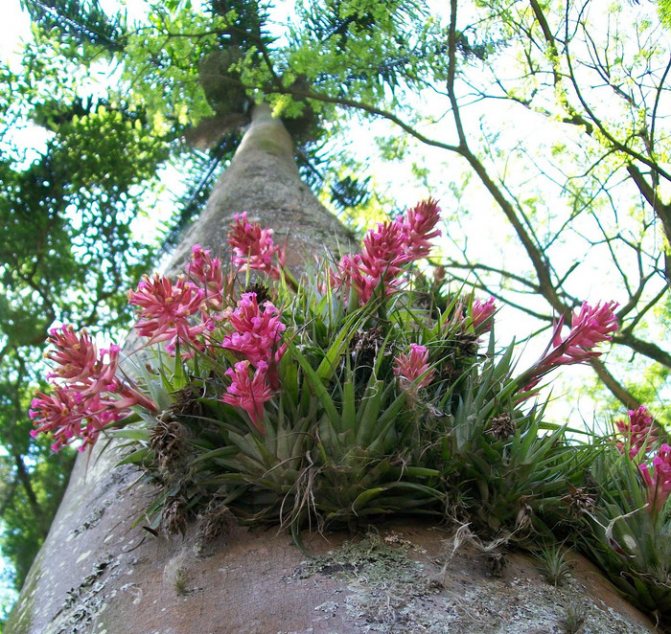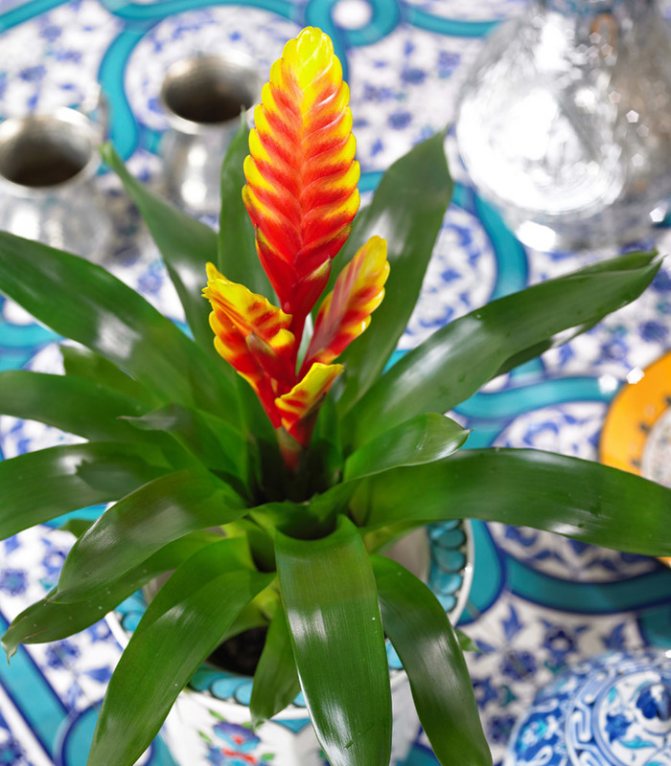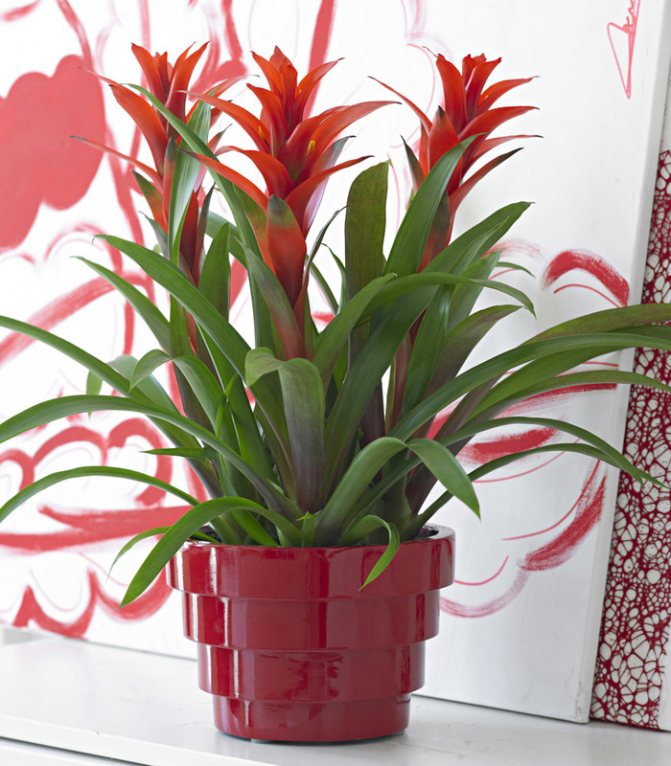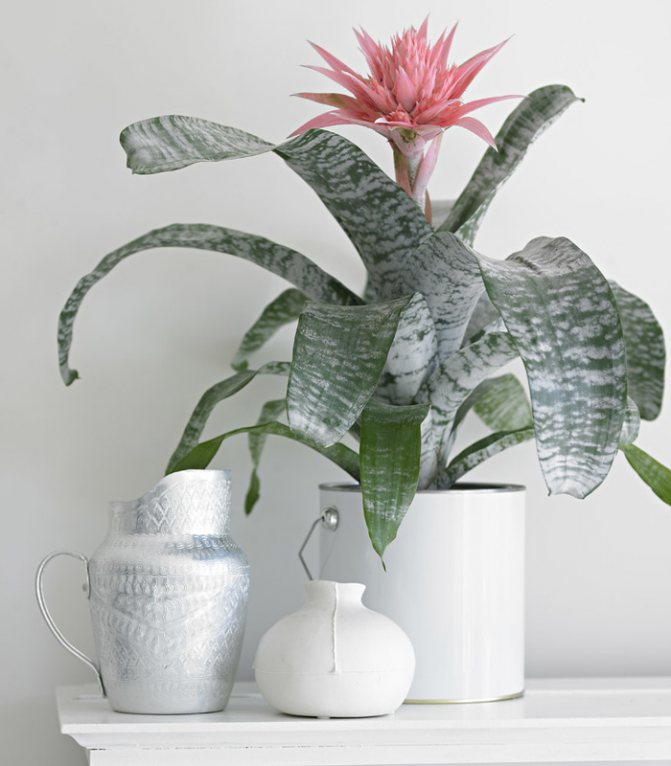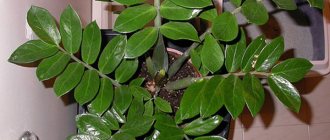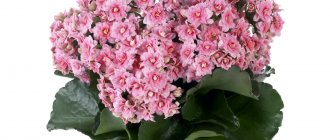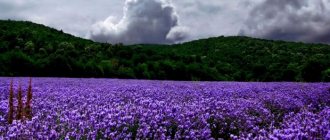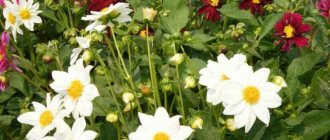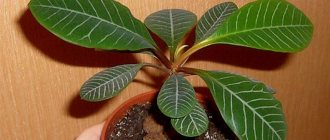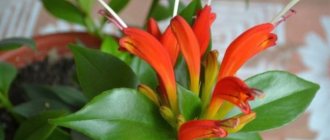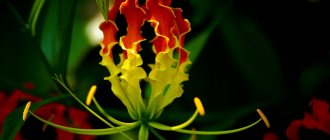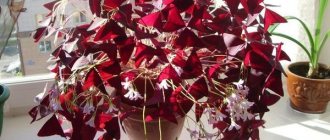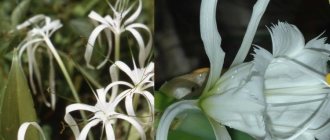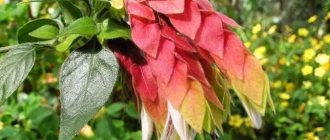Bromeliads (bromeliads) are one of the most diverse and largest families. Plants of this family have settled in tropical rainforests, rocks, and even found in deserts. Therefore, it is not possible to recommend universal care for bromeliads. Plants of this family are attractive and original. There are beautifully flowering, with a spectacular inflorescence-spike, there are decorative deciduous species with a bright color or an unusual appearance and form of growth. It is very important to determine the habitat of your plant, this will allow you to choose the right care. Usually, in nature, bromeliads settle on trees, various protrusions, that is, they are epiphytes, but there are also terrestrial species. There are three main types of family members.
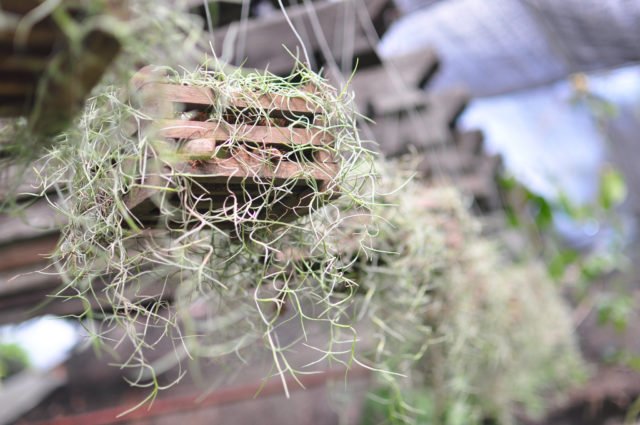
Tillandsia
Planting and caring for bromeliads
- Bloom: usually in summer, depending on the variety, flowering lasts from 2-3 weeks to six months.
- Lighting: bright diffused light.
- Temperature: in spring and summer - 20-25 ºC, in autumn and winter - 15-18 ºC.
- Watering: frequent, in the heat - daily. Water is poured into the funnel of leaves.
- Air humidity: high - about 70%. Frequent spraying of the leaves and keeping the plant near the aquarium or on a pallet with wet pebbles is recommended.
- Top dressing: a solution of mineral fertilizer for bromeliads or for flowering plants: in the warm season - once every 2-3 weeks, in winter - once every 1.5 months.
- Rest period: in winter.
- Transfer: at the beginning of active growth, once every 2-3 years - as the space of the pot is filled with roots.
- Reproduction: from February to April by shoots.
- Diseases: powdery mildew and rust.
- Pests: mealybugs, scale insects.
Read more about growing bromeliads below.
Terrestrial bromeliads.
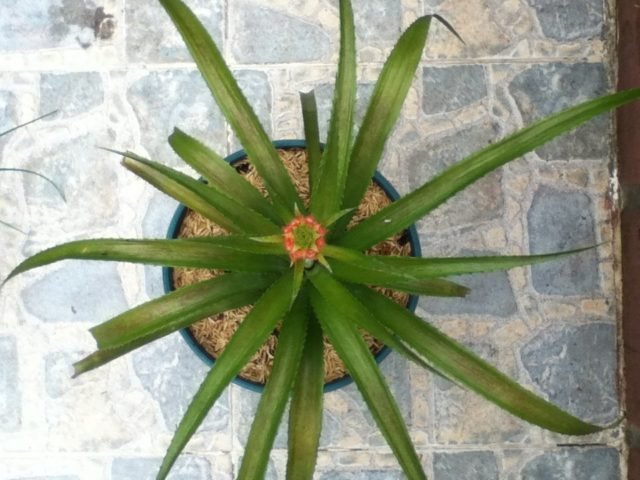

A pineapple
First of all, this is the well-known pineapple, but there are other types. The main absorbing organ is the root. Some bromeliads of this type can live in deserts. These plants have fleshy leaves that store water. The substrate should be nutritious and loose: leafy earth, humus, pine bark, sand (4: 2: 1: 1).
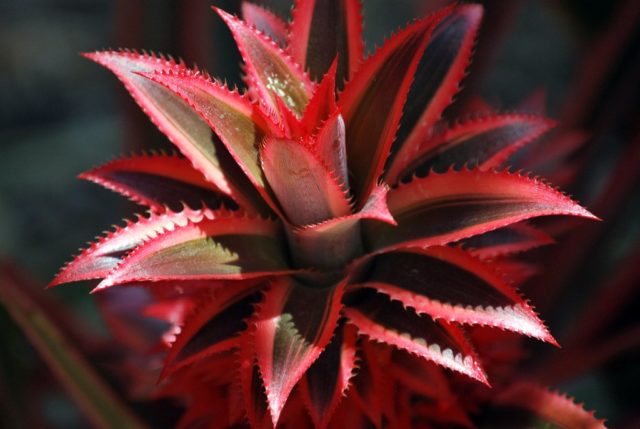

Flowering in bromeliads is stimulated by ethylene. Its plant produces itself, and therefore additional stimulation is usually not required. After the formation of fruits, the rosette dies off, but by this time young lateral processes have grown. Next time they will definitely please with their unusual and long flowering.
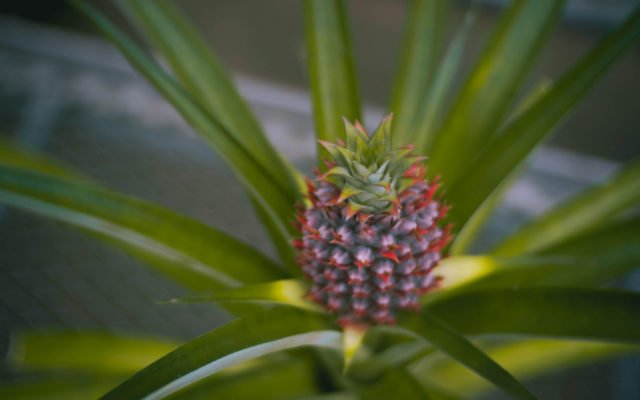

A pineapple
Fertilizers for bromeliads are taken 5-6 times less than the recommended doses, since in nature they are deprived of a large amount of nutrients. Orchid fertilizers can be used.
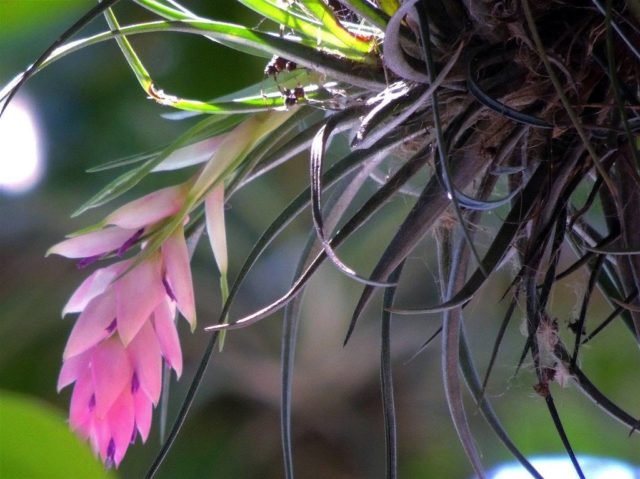

Tillandsia
Subscribe to our Telegram channel
Bromeliad flower - description
Domestic bromeliad is a perennial herb with a well-developed root system that reliably holds the flower in the ground, usually with a shortened stem, decorative, often prickly and variegated, dull green leathery leaves up to 50 cm long, forming a funnel, and a high peduncle that crowns a bright yellow or red spike, racemose, paniculate or capitate inflorescence. Large stipules give the inflorescence brightness. After the end of flowering, bolls or juicy berries are formed on the plant, which in some species grow together into a seed.Currently, about 35 species of bromeliads are grown in room culture.
Reproduction
The best way to propagate bilbergia is to use young shoots that grow at the base of the bush. The young are separated when the shoots grow to 1/3 the length of the mother plant or 20 centimeters. The age of the transplant layers is 2.5-3 months.
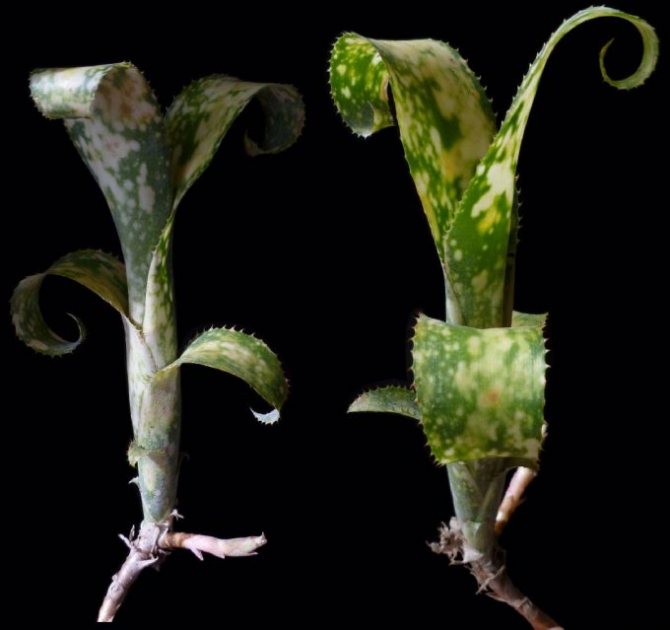

Children are cut off, the cuts are powdered with ash. Transplanted into a container, sprinkle the roots with earth. The socket must be located above the surface. To speed up rooting, special soil mixtures with a high level of phosphorus are used. The roots, if done correctly, will grow back after 30 days. The process is fixed with a support.
Maintain a temperature regime of 22-24 degrees. Cover with a bag or glass to create optimal humidity. When transplanting, you can divide old bushes into 2-3 parts. Large cuttings take root quickly and bloom next year.
When propagating by seeds, the collected material is used. Sow in peat or sphagnum, keep under a film until germination. At the stage of 2-3 leaves, they dive into permanent pots.
Home care for bromeliads
How to care for bromeliads at home
A home bromeliad flower needs special conditions. He needs a lot of diffused light and clean air: it is often necessary to ventilate the room where the room bromeliad is located, but in no case should the plant be allowed to stand in a draft, near a fan or air conditioner. If you keep the bromeliads in direct sunlight, protect them from them at least from noon to 15-16 hours: the burning sun can leave burns on the beautiful leaves of the flower. The optimal place for bromeliads is the windowsills of the east-facing windows. In winter, when daylight hours become short, it is necessary to install additional artificial lighting for the plant, and the light source should be directed not at the bromeliads, but at the ceiling.
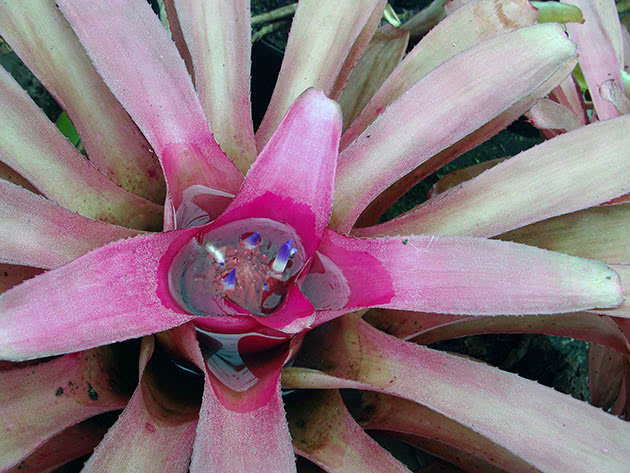

In the photo: Large bromeliad
The comfortable temperature for bromeliads in summer is 20-25 ˚C, and in winter 15-18 ˚C. The lower threshold is 12 ˚C, but you cannot keep the plant at this temperature for too long.
- Dendrobium orchid: growing at home
Watering and feeding bromeliads
Bromeliads at home require frequent watering, and in hot weather - daily. Many growers pour water into the funnel formed by bromeliad leaves, since it is through the leaves that the plant absorbs most of the nutrients. However, in order to moisturize the plant in this way, you need to have experience and dexterity. For beginners, we advise you to moisten the substrate in the pot. To avoid the development of putrefactive processes, allow the top layer of the soil to dry out between waterings, but there should always be water in the pan. In winter, watering is carried out once a week.
A close relative of bromeliads - nidularium
Bromeliads require high air humidity: it must be at least 70%. Maintain this level by spraying the leaves, placing containers with water or an aquarium near the plant. You can use a household electric humidifier or place the bromeliad pot on a pallet of wet pebbles. Both for spraying the leaves and for watering the plant, boiled water, previously separated from chlorine for two days, is needed.
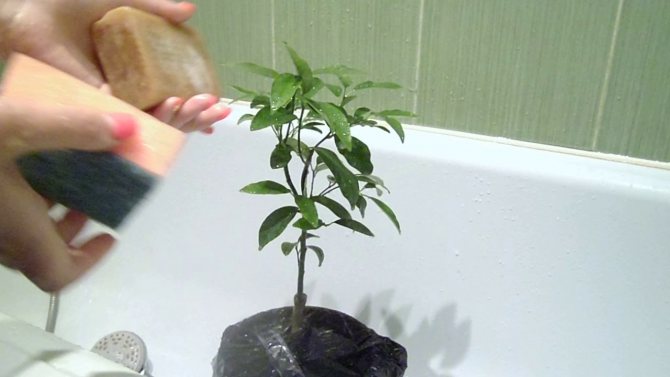

Since bromeliads get oxygen through their leaves, they should always be clean: wipe them at least once a week to remove dust with a damp sponge.
Bromeliads are fed with a solution of mineral fertilizers for flowering indoor plants... In the warm season, you need to make top dressing once every 2-3 weeks, and in winter, once every one and a half months is enough. Top dressing can be root (watering a pre-moistened substrate with a fertilizer solution) or foliar, that is, spraying bromeliads with a solution of trace elements over the leaves.
Flowering bromeliads
Bromeliads usually bloom in the summer. If you want to speed up the onset of flowering, place a few apples around the pot and cover the flower and fruit with a plastic bag for 10 days: the ethylene released by the apples stimulates the plant to bloom. How does bromeliad bloom? The flowers of this plant are inconspicuous, but the bracts are bright, catchy and eye-catching. Flowering can last from several weeks to several months, depending on the species.
Do not rush to remove the bromeliad peduncle, wait until it dries completely and only then carefully cut the flower arrow. Keep in mind that the faded bromeliad rosette will not bloom again: after flowering, it dies, but leaves the children, which develop into independent adult plants.
Bromeliad transplant
Bromeliads are transplanted only when its roots fill the entire pot and begin to hang from the drainage holes or protrude from the substrate. This is usually done once every 2-3 years, and it is better to transplant at the beginning of active growth.
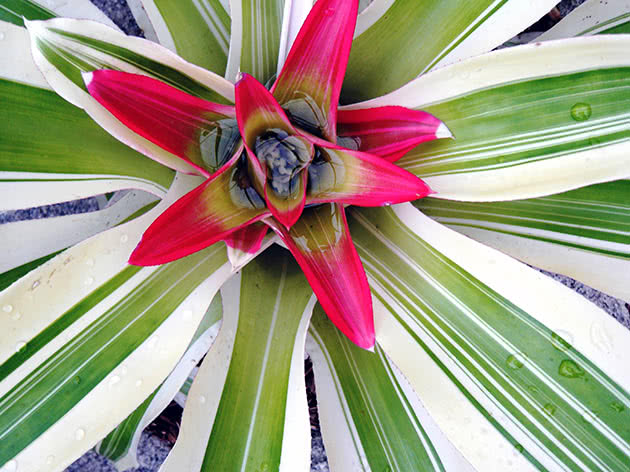

In the photo: Rosette of bromeliads
The plant is grown in a ceramic or wooden dish, and each subsequent pot should be 2-3 cm larger than the previous one. How to transplant bromeliads? Place a layer of drainage material on the bottom of a new container, then fill the container with a moist and lightweight water and air permeable substrate, which must contain coarse sand and peat, make a hole in the center and fill it with water. Remove the bromeliad from the old pot, carefully free its roots from the substrate, place the plant's root system in the hole and fill the remaining space of the pot with the substrate, securing the roots well in it.
How to grow bilbergia - advice from experienced florists
Breeding bromeliads
Bromeliads are propagated after flowering is complete, from February to April. At the base of a faded plant, shoots appear - kicks. They are allowed to grow and grow stronger for 2-3 months, then cut with a sharp sterile knife, sprinkle the sections with charcoal powder and allow them to dry out. Since the shoots already have roots, they are planted in pots with a wet mixture of peat and sand, fixed and rooted at a temperature of 20 C. The planted kicks will bloom in one and a half to two years.
Atmospheric bromeliads.
Bromeliads live on tree branches, ledges, power lines, etc. The roots of these species are practically undeveloped, and they get food and moisture from dew, fog and rain. Therefore, they need high humidity.
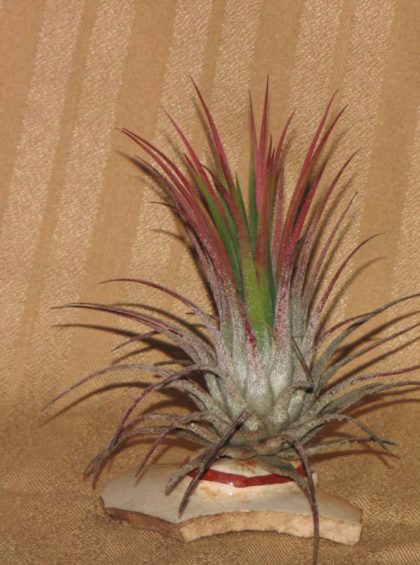

Tillandsia
They are "watered" with very soft water. Very little additional nutrients are needed, since in nature bromeliad minerals are obtained from dust particles falling on the leaves. Thus, the main organ of absorption is not the roots, but the leaves, although sometimes it is difficult to call them that.
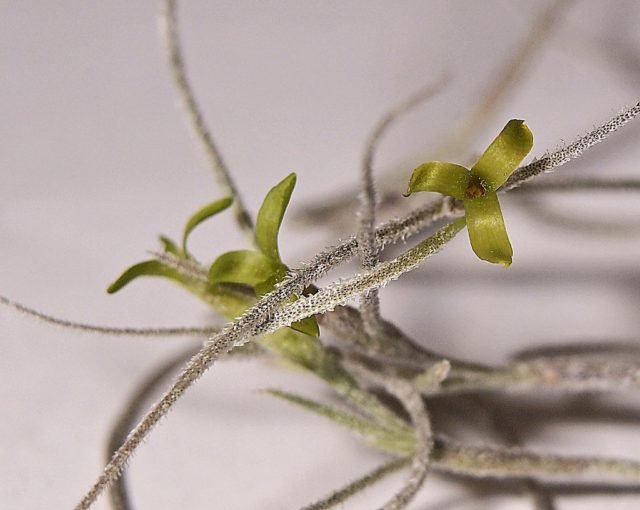

Tillandsia
Plants of this type are not watered, but only sprayed. They need a lot of light, but it must be diffused, since they are created by conditions of a foggy climate. This type of bromeliad has small scaly formations called trichomes. They completely cover the leaves and allow the plant to absorb nutrients.
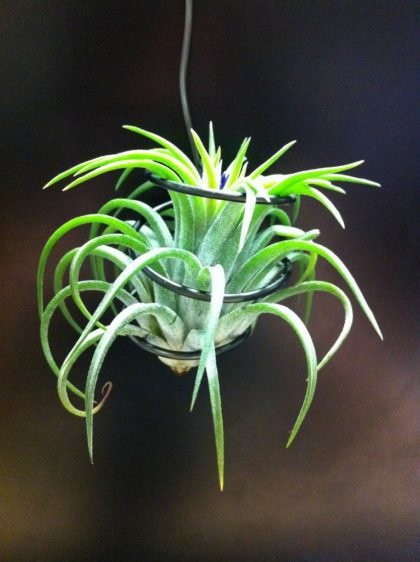

Tillandsia
You cannot distinguish them with the naked eye, you will notice a silvery-gray, mealy surface. Plants of this type do not have bright colors, but they have an unusually diverse growth form. A typical species of this type is tillandsia usneiform (Louisiana moss).
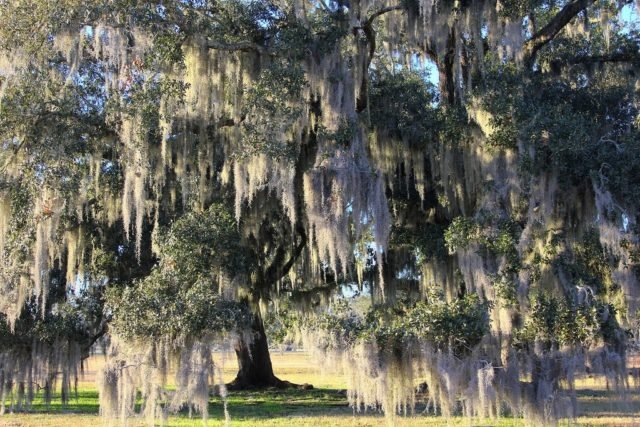

Tillandsia usneiform in nature
Pests and diseases of bromeliads
Diseases of bromeliads and their treatment
In rare cases, bromeliads can be affected by fungal diseases such as powdery mildew and rust, which can be dealt with by treating the plant and substrate several times with copper-containing fungicidal preparations.
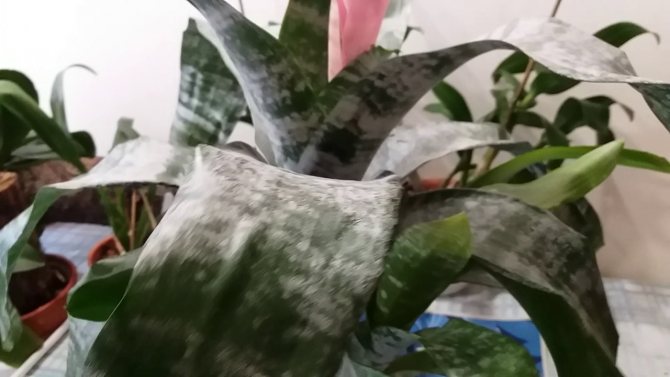

Direct sunlight can burn brown spots on bromeliad leaves, so cover the window with a light cloth in the afternoon.
- Vriezia at home
Chronic waterlogging, especially when the room temperature is too low, bromeliad leaves can lose turgor and turn yellow, and brown leaf tips indicate that the plant suffers from dry air and insufficient watering.
As you can see, all the ailments of bromeliads are associated with violation of conditions of detention and poor care. Follow our recommendations and your bromeliad will always be healthy.
Bromeliad pests and control
With improper or insufficient care, mealybugs or scale insects can parasitize bromeliads. Collect them by hand and wipe the leaves with a sponge or cotton swab dipped in soapy water, and after a while, wash off the soap with clean water, while covering the substrate in the pot with a film. If in this way it is not possible to destroy all pests, treat the bromeliad with an insecticide - Fitoverm, Aktara, Aktellik, but make sure that the solution does not fall into the funnel. If you don't want to use chemicals, try using a tobacco solution to kill insects.
Reservoir bromeliads.
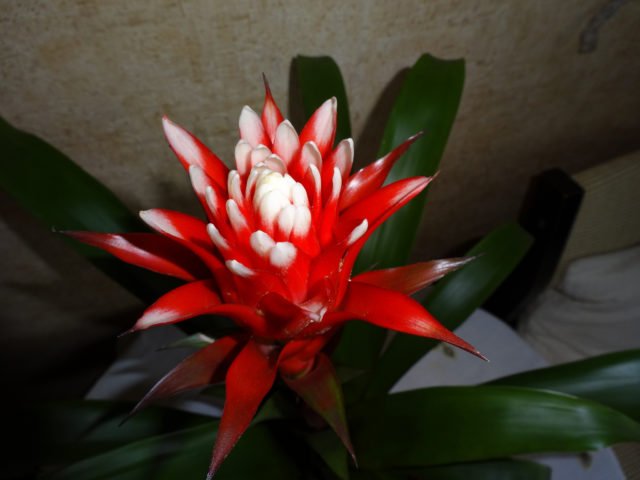

Gusmania
Species of this type form a dense (or not so) outlet, forming a kind of reservoir. Under natural conditions, water accumulates in it, leaves of plants, insects fall. Since the water, with which these bromeliads are constantly in contact, is rainwater, accordingly it should be very soft.
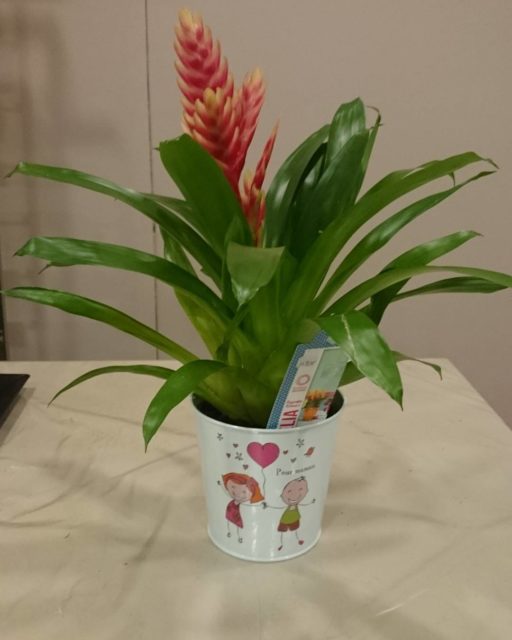

Vriezia
Such bromeliads are poured into a funnel, but still the water is drained from it, preventing stagnation. But it is better, nevertheless, to water into the soil, and spray the upper part when watering (leaves can rot). The substrate for such bromeliads should be loose and moisture-consuming. It is best to buy ready-made soil for bromeliads or orchids from the store (sold in transparent bags).
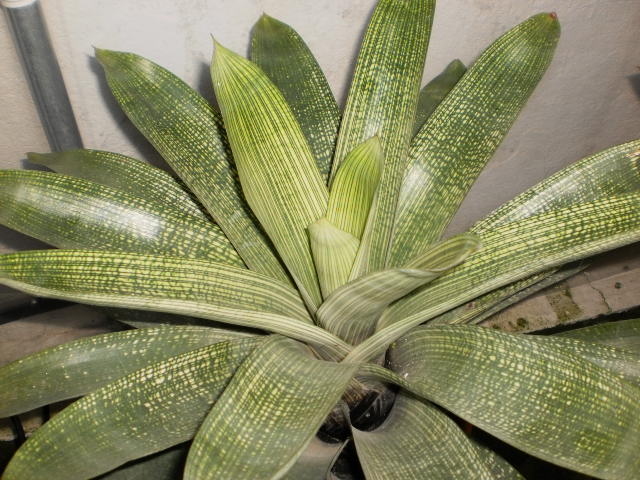

Vriezia
Water reservoir bromeliads sparingly, so that there is no stagnation of water. The substrate should not dry out completely. The requirements for illumination in reservoir bromeliads are different, since the species living at the base of the trunks are more shade-tolerant, and the species living at the ends of tree branches are more light-loving.
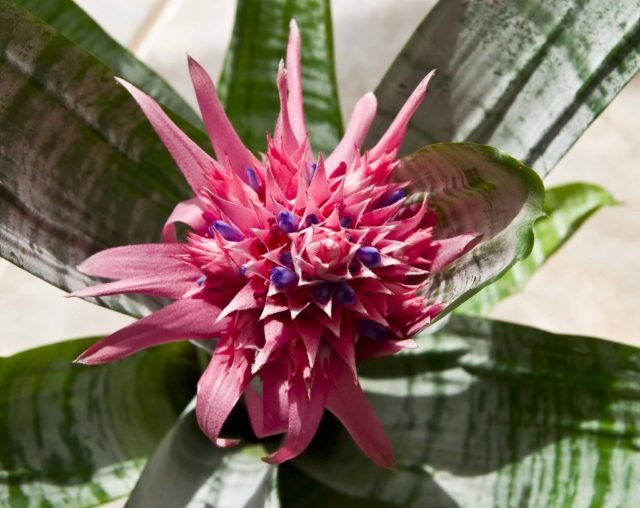

Ehmeya
Reservoir bromeliads include vriezia, cryptantus, blue tillandsia, that is, the most spectacular and beautiful species, with bright variegated leaves and inflorescences.
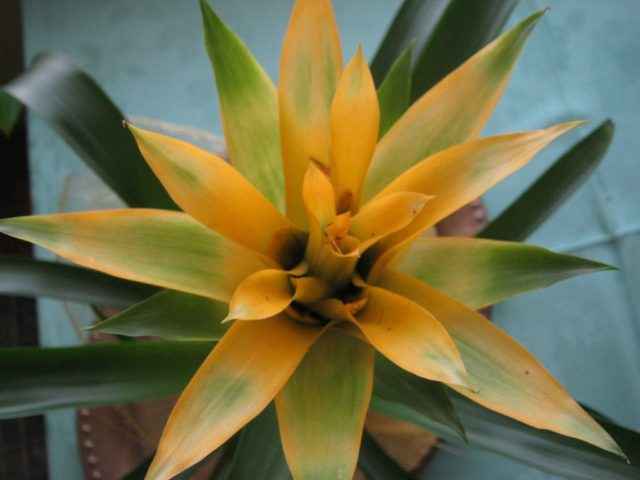

Gusmania
Species and varieties of bromeliads
Of the species of the genus Bromelia, only bromeliad penguin (Bromelia pinguin)which naturally occurs in Mexico, Ecuador, Venezuela and Costa Rica. This species, containing the biologically active enzyme penguinin, in nature forms large infructescences from oblong fruits.
However, among flower lovers, it is customary to call bromeliads not only representatives of the genus of the same name, but also plants belonging to other genera of the Bromeliads family.
Guzmania, or guzmania
It is a genus of epiphytic stemless plants native to Brazil, South Florida, West Indies, Ecuador and Colombia, and is widely represented in indoor culture. The leathery belt-like leaves of gusmania form a goblet rosette in which morning dew or rainwater accumulates in nature, and the inflorescence located on the leafy arrow consists of nondescript flowers and bright bracts of yellow, orange, red and even purple. At home, the following types and cultivars of Gusmania are most often grown:
- gusmania reed - a large plant with a dense rosette of bright green leaves, reaching a length of 50 cm. On the back of the leaves there are brown stripes. On a short peduncle there is an inflorescence of small white flowers, which are almost invisible due to the orange or red apical leaves. Varieties: Minor, Tempo;
- Guzmania Nicaraguan - a medium-sized plant, ideal for growing in indoor culture. It has an erect spicate inflorescence with lemon-yellow flowers and scarlet bracts and a dense, compact rosette of 10-15 lingual light green smooth leaves up to 2.5 cm wide and up to 5 cm long, covered on the upper side with small scales, and on the lower in brown or purple color.
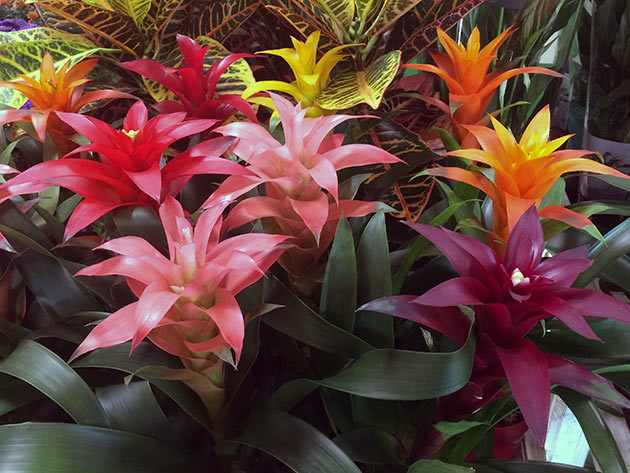

Photo: Guzmania
In addition to the species described, mosaic, tricolor, blood-red, Ostara, one-spiked, Donnell-Smith and konifera are also grown at home.
Rules for caring for guzmania at home
Vriesea
A genus of South American tropical plants with large, bright paniculate or spike-shaped inflorescences and decorative rosettes of juicy, dense, long leaves. Among them there are both epiphytes and terrestrial forms. The most famous species in room culture:
- Vriezia Sanders - a plant with a rosette up to 60 cm in diameter and up to 40 cm in height from smooth leathery leaves of gray-green color, often with a purple tint, more clearly visible on the underside of the leaf plate. A drooping or straight peduncle is crowned with an inflorescence of spike-shaped brushes, consisting of yellow flowers and the same shade of stipules;
- beautiful vriezia, or brilliant - an inhabitant of tropical rainforests with a rosette of broad-lanceolate, variegated, as if covered with dark transverse strokes of leaves up to 40 cm long. The color of the stripes can be either dark green or purple. On the erect peduncle, a wide lanceolate spike is formed of yellow flowers and bright carmine-red bracts.
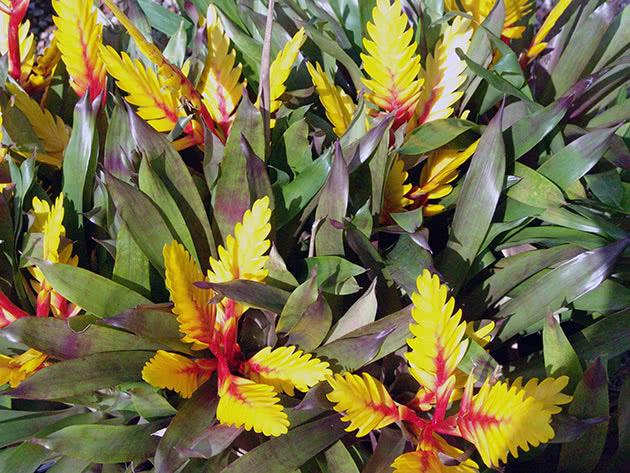

In the photo: Vriesea
In addition to the species described, keeled, royal, perforated, hieroglyphic and even giant vriezia are also grown at home.
Conditions for growing vriezia in an apartment
Ehmea (Aechmea)
It is a genus of epiphytic plants common in South and Central America with jagged leaves along the edge, forming funnel-shaped rosettes, and with bright inflorescences on a long, thick peduncle. The most popular home-grown species are:
- ehmeya matte red - a plant with a dense funnel-shaped rosette of tongue-shaped, light green in the upper and lilac on the lower side leaves up to 50 cm long with finely serrated edges and scales located along the leaf plate. The inflorescence consists of pale blue flowers and bright red bracts;
- ehmeya sparkling - a plant with a loose rosette of pale green belt-shaped leaves with a bluish bloom up to 40 cm long and up to 6 cm wide with a jagged edge and a rounded apex. The inflorescence of coral-red flowers with a blue top and bright pink bracts forms on the peduncle.
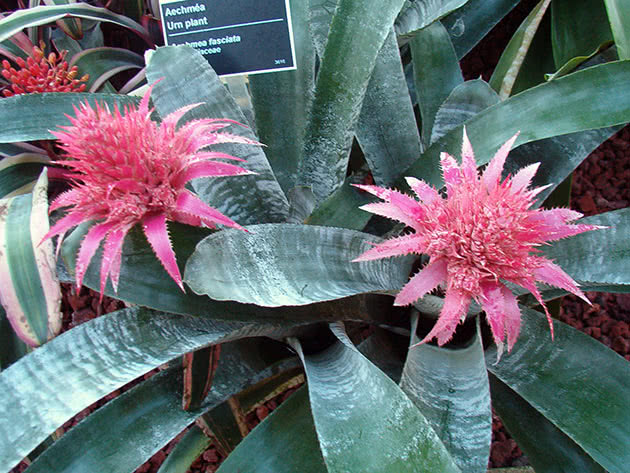

In the photo: Aechmea
In room culture, you can also find holosteel echmei, tailed (bearded), striped, shaggy, curved, two-row, Weilbach and others.
How not to ruin ehmeya on the windowsill
- Sedum (Sedum) - care, photos, types
Tillandsia
It is a species of herbaceous plants, numbering about 500 species, native to South and North America. Most of these plants are epiphytes, but there are also lithophytes and terrestrial species growing on stones in the genus. Some types of tillandsia are popular houseplants:
- tillandsia "Medusa's head" - the most famous type of unusual shape, resembling a bulb with closed leaf bases, bending to the side only at the top. The rosette of leaves is usually inverted, the bright purple flowers reach a length of 32 mm, and the inflorescences are linear or finger-shaped;
- tillandsia blue - a species with narrow curved leaves up to 30 cm long. The base of the leaf plate, covered with small scales, is reddish-brown.The plant blooms with a dense elliptical spike-shaped inflorescence of small blue or purple flowers and lilac or pink bracts.
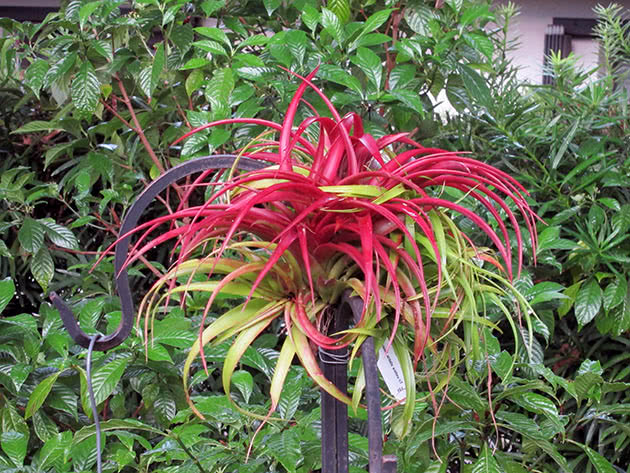

Photo: Tillandsia
Tillandsia Duer, Linden, sitnikovaya, silvery, Gardner's, violet-flowered and others are also popular.
Professional tips for growing tillandsia
Bromelia: transplant after purchase
A transplant for this representative of epiphytes is not required at all, because the plant can die from it. The only reason this procedure can be carried out is an overgrown root system and an unsuitable small pot. To do this, they choose a new flowerpot, surpassing the old one by a couple of centimeters in height and width, and prepare the soil on their own.
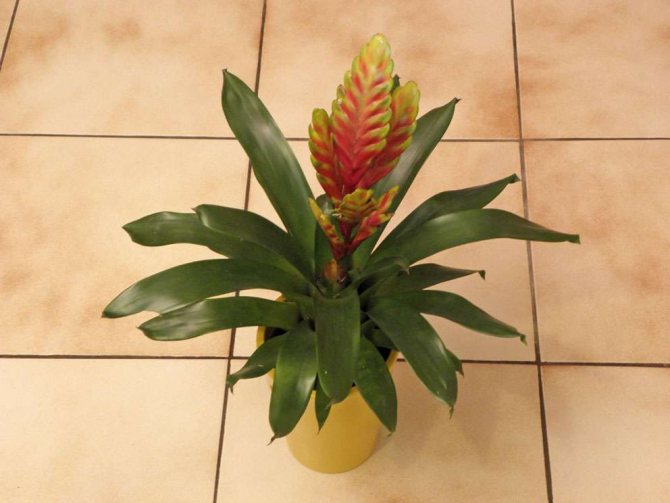

The choice of soil mixture can be treated without special criteria, because the main difference between a flower and other domestic plants is the ability to adapt to any conditions of detention. If the house has a list of the components: sand, peat, garden graphy, and leaf humus, then you can mix them in equal proportions, except for the last component. A soil mixture for orchids purchased without much hassle is also suitable for transplanting. You can add a little peat and sand to it. It is imperative to lay the drainage on the bottom during transplanting - it helps the root system breathe freely and easily remove excess water from the flowerpot.
In the process of transplanting, when the flowerpot is already filled with soil, a small hole is made in the center of the pot. Water is poured into it (you can stand it for home flowers, or you can directly from the tap). Bromeliads are placed in the area of the central part, the root is fixed and covered with a small amount of soil. The stem of the flower is strong, so it is better to fix it firmly, but do not overdo it so as not to break it.
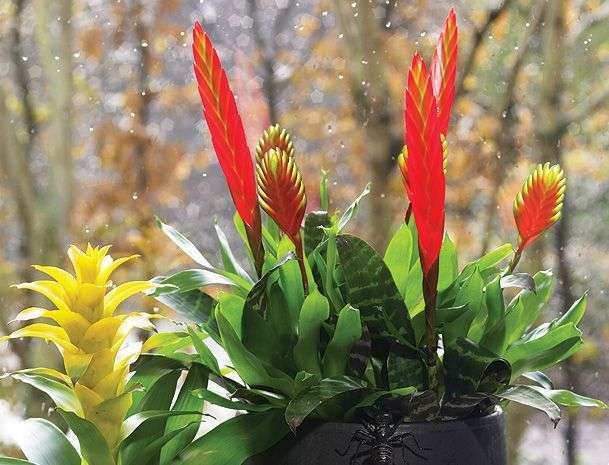

It is possible not to engage in the seating of new shoots, then the flowerpot will represent a group that vaguely resembles a shrub. This close interaction will ensure that the flowering process is accelerated for new plants. Care for them is carried out without changes, as well as for a single flower.
Ignoring the plant's need to be at rest
All bromeliads (without exception) need a pronounced, special, prolonged resting stage. Even if the plant's recommendations say that it is unpretentious and can put up with a warm winter, this does not mean that it does not need rest. It is with such hardy indoor species that such errors most often occur. Without changing (or not being able to adjust) the temperature, we forget that during the dormant period, the need for coolness in bromeliads does not exhaust all the necessary conditions.
Watering, air humidity, top dressing are adjusted during this period so that the plant rested and prepared for a new stage of active vegetation. Top dressing for 3–4 months for plants is not carried out, and soil moisture is reduced at least twice as compared to previous indicators.
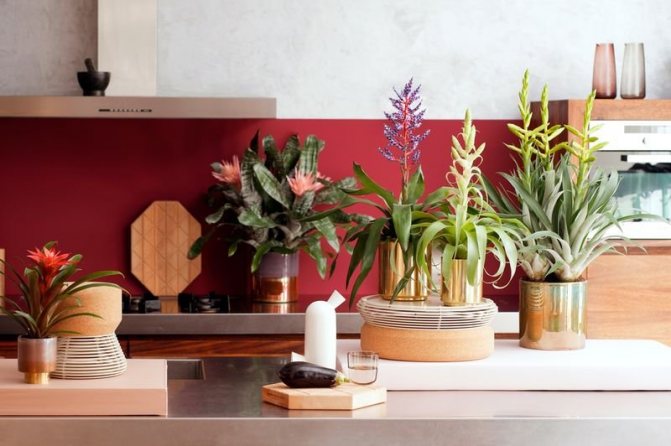

All bromeliads are relatively resistant to normal air in city apartments. <>
Lack of attention
To avoid any problems in growing bromeliads, you need to remember the main thing - you need to constantly monitor the plant. Even if we are talking about pests, then at the first signs of the appearance of these problems, it is very easy to cope with them, but it will not be so easy to clean the thorny, tough leaves that do not like contacts, with a strong defeat by scabbards and their Co, it will not be so easy, even if you stock up with a decent set insecticides.
It is better to inspect the plants weekly or during every second watering, paying attention to the outlet, the condition of the leaves, their reverse side, color, and the appearance of signs of wilting or depression. If you check bromeliads regularly, you can immediately detect obvious signs of problems that have arisen, and even the slightest disturbances as a result of waterlogging of the soil.
How to care for these plants at home?
The usual temperature for these groups of bromeliads is about +12 - 14⸰С. The temperature should be raised above 20⸰C for flowering rosettes so that they begin their flowering.
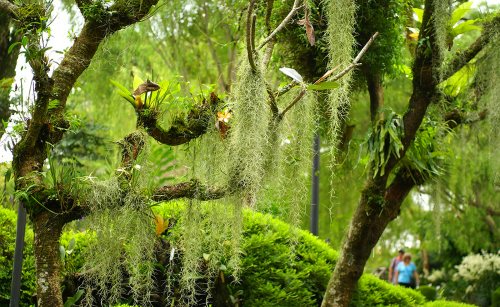

Tillandsia usneiform
The following recommendations must be followed:
- Most of these home plantings require good lighting, but not in direct sunlight.
- The best place for them would be windows facing west or east.
- If you have to put them on the south side, then cover them from the sun with tulle or other fabrics that will scatter sunlight.
- And only such bromeliads as pineapple or cryptantus feel great in direct sunlight.
Pouring these indoor plants is not recommended in any case. You also need to worry about drainage. such plants should always be full of water. You need to change the water at least once every 30 days. If the water in the region is too hard, then the "funnel" should be filled with rainwater. The soil should be moistened only as it dries. If such plantings do not have a "funnel", then you need to ensure that the soil is always moist (but not wet!).
To increase the humidity of the air in the room where these beautiful plants stand in the summer, you should spray their foliage daily. For this type of domestic "green" pets, it is typical to obtain nutrients through foliar feeding. Therefore, periodically add a solution of liquid fertilizers to the sprayer.
But transplanting bromeliads into the soil is very rare (if a similar procedure will be performed at all).
Such plants reproduce by offspring that grow at the base of bromeliads. Such "cuttings" are planted in a special soil for such plants. Usually, the offspring is separated from the mother's outlet a few months after its appearance, when it has its own roots. Such "cuttings" are planted in the ground at a shallow depth. Such offspring are kept in a warm place until they take root.
Genus gusmania
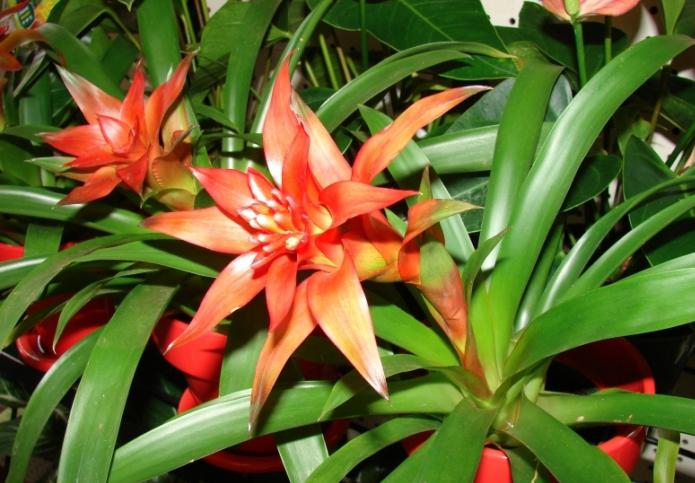

All representatives are epiphytes, there are about 120 species. On sale is found mainly reed gusmania and its varieties. The leaves form a flat rosette up to 30-45 cm long. Flowering lasts up to two months, after which the plant dies, like any other bromeliad. Home care is quite simple and will not cause any particular difficulties even for beginners. Gusmania minor (up to 30 cm tall), mosaic (with decorative striped leaves), Tsana, one-spiked, blood-red, etc. are also popular and known.
Bromeliad tree
To make it, it is necessary to strengthen the selected snag in the container with stones and plaster. It can be installed strictly vertically or with an inclination. From above, the container is covered with earth or small colored stones are used for decoration. Plants with a pronounced funnel-shaped rosette are suitable for such a "tree".
The selected plants are taken out of the pots, the roots are wrapped in sphagnum moss and tied to the branches of the driftwood with wire protected with polymer insulation. One or two flowers can be planted in a container. The rosettes of flowers should be filled with water constantly, and once every seven days, the roots, wrapped in moss, are sprayed with soft water.
How to choose a healthy plant in the store
Determining that the plant you are buying is healthy is not difficult. The green fleshy leaves form a rosette. Some species have a pronounced marble pattern on the surface. Bromeliads have no trunk, the peduncle rises above the rest, it is always bright in color.
Based on the ideas about the appearance of a healthy plant, it becomes clear: the presence of spots, plaque on the leaves, their softening guarantee that the flower is sick.


Bromeliad appearance
Substrate
Bromeliad roots need light, loose and breathable soil, so planting a plant in normal heavy soil will lead to strong oppression.The best option for bromeliads would be planting in a substrate for orchids with the addition of peat and sand (2 parts of the substrate, 2 parts of peat, 1 part of sand). At the bottom of the pot, it is necessary to put a layer of expanded clay 2-3 cm high for good drainage.
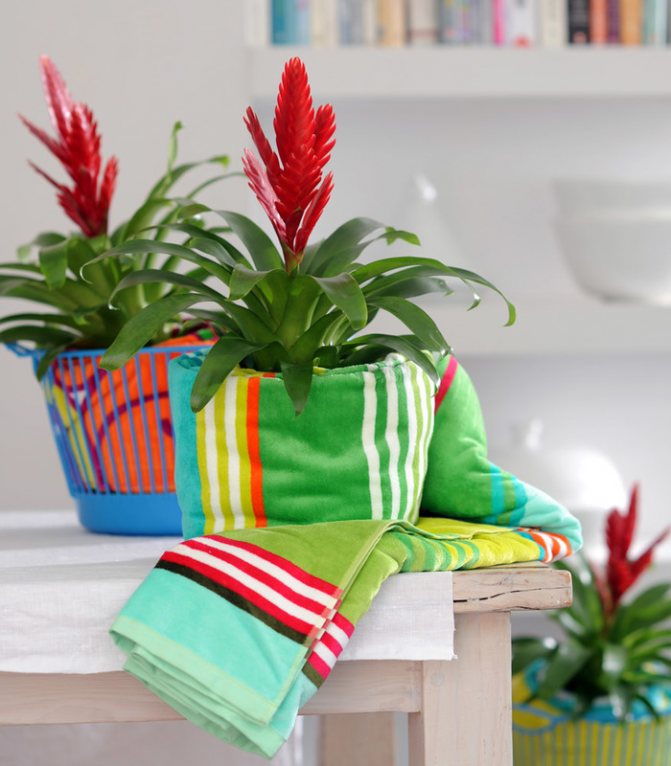

Bromeliad does not need frequent transplants. For example, a plant purchased in a store will be able to grow well in its pot for a long time without transplanting.
Transplant according to general standards
When bromeliads are encountered for the first time and their features are not sufficiently studied, they make a very annoying mistake when transplanting. It is not a common herbaceous perennial or indoor shrub. In bromeliads, the root system is underdeveloped; the plant is extremely sensitive to injury.
Before replanting this culture, it is worth studying the features of its structure. The roots of the plant are extremely fragile and sensitive, they must be handled very carefully, the voids are filled with soil gradually and carefully, the soil can only be compacted carefully and easily, controlling the level of the plant's burial.
Common mistakes of florists
The bromeliad flower needs specific care, so novice growers often make mistakes. The most common problems when growing bromeliads are summarized in the table.
Table - Errors in the care of bromeliads
| External manifestation | Possible reason | Helping the plant |
| The flower stalk dries up | - End of flowering | - The peduncle is cut off, waiting for the appearance of children |
| Leaves wither | - Lack of moisture; - natural process of rosette dying off after flowering | - Correct the irrigation regime; - often sprayed |
| Leaves turn pale | - Dim lighting | - Rearranged to a more illuminated place; - organize additional lighting |
| Growth slows down | - Lack of light; - low air humidity; - lack of nutrition; - low temperature | - Regulate the temperature regime; - increase the intensity of lighting; - spray bromeliads daily; - fed with a balanced fertilizer |
| Brown spots appear on the leaves | - Sunburn | - Damaged leaves are cut off; - shade from the sun |
| The tips of the leaves dry up | - Using hard water for irrigation; - evaporation of water from the socket | - Water is defended before irrigation for at least six hours; - watered directly into an outlet |
| Roots and leaves rot | - Deepening of the root collar during planting; - stagnant water in the outlet; - too frequent watering | - When the roots decay, bromeliads are transplanted with the removal of damaged areas; - when the rosette is rotting, the plant is thrown away |
In the reviews, flower growers write that most of the problems are associated with improper watering. The optimal irrigation schedule is selected empirically, taking into account the temperature of the content and the characteristics of the soil.
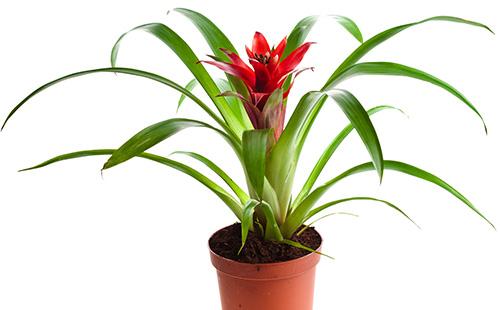

Placement in the apartment
The place where you are going to place the bromeliad must be well lit
A place for bromeliads should be chosen taking into account its light and humidity. Moreover, the last indicator is of great importance. The room should be with high air humidity. It's good if there is an aquarium there.
The bromeliad site should be well lit, but not in direct sunlight.that can leave burns on the leaves of the plant. The best option would be a room facing east. In winter, bromeliads require supplemental lighting with a phytolamp, and the light should be directed not at the flower, but at the ceiling.
Bromeliad categorically does not tolerate a draft, which means that it cannot be placed in a room where a fan or air conditioner is constantly running.
Genus vriese
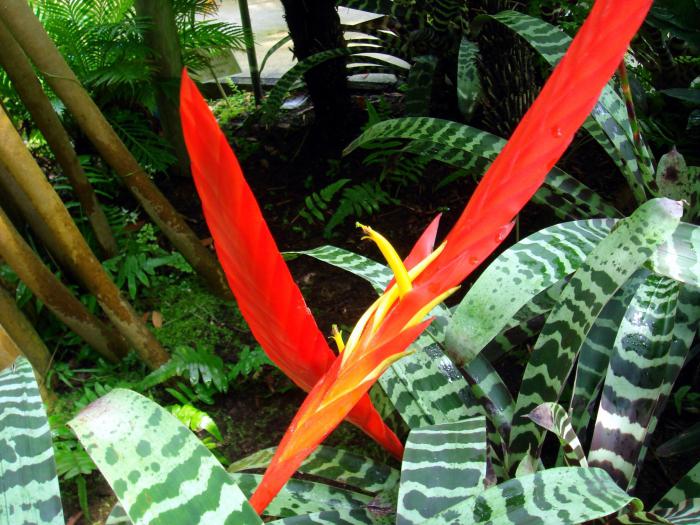

It includes a fairly large number of species - about 250 terrestrial and epiphytic plants, 150 of which are cultivated in indoor conditions. They are known as the most thermophilic house flowers in the bromelet family, sometimes even providing additional heating to the pot.The leaves form a dense funnel, the color can be any - from monochromatic to variegated. In culture, the most famous vriezia brilliant (pictured), the height of which, together with the peduncle, can reach up to one meter.
Flowering and development features
What most people think of as a large flower is actually the upper leaves, modified into bright bracts. True bromeliad flowers that appear on a bright inflorescence are usually small, inconspicuous and inconspicuous. Unfortunately, bromeliad blooms only once in a lifetime: each rosette grows and accumulates strength for several years, so that they are enough for a single flowering for several months, after which the plant dies.
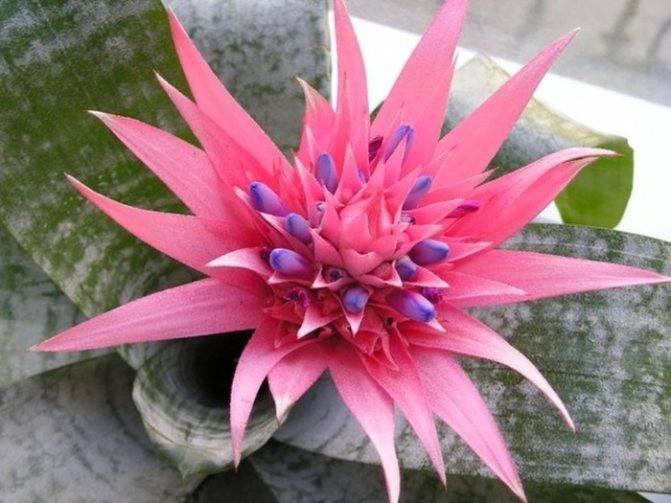

But not everything is so bad: young rosettes - "children" appear from the base of the mother's socket. Therefore, in order to preserve the bromeliads in their home collection, the fading inflorescence is carefully cut with scissors, the plant continues to be watered and looked after as usual. Gradually, the "kids" will grow up, and the mother's socket will dry out. After that, you can put the "kids" in different pots or leave them to grow in an old pot, carefully removing the dried mother socket (you cannot leave it - it spoils the appearance and can become a source of infection for young plants).
When the young rosettes reach adult size, you can artificially speed up their flowering by placing a few ripe fruits next to the pot for about a week. The fact is that fruits emit ethylene gas, which provokes the flowering of bromeliads.
General standard care
In watering, air humidity and means of increasing it, fertilizing, examinations, wiping leaves from dust, examinations, frequency of replanting - in every aspect of caring for a representative of the Bromeliad family, individual requirements must be observed.
Carefully check all the preferences of each particular plant for care, ask about the usual procedures for it, carefully observe it. Each species has little secrets or its own characteristics, and in order to properly care for your plant, you must first study it well and learn all its secrets.
Wrong choice of plant
The biggest bromeliad miss always happens before the plants get into the house and adapt. As for any exotic, atypical indoor plant for our climate, the choice must be made not only for the decorative qualities of the plant itself. Of course, he should like it, but the owners, or rather, the house, should like him no less.
Not analyzing and assessing the conditions that a plant from the Bromeliad family will face in your home is the most dangerous mistake you can make. And it will be possible to do without consequences only if you have the ability to adjust lighting or temperatures using additional means.
First of all, you need to find out about the conditions that a particular plant needs, and compare them with those that are in the house. Lack of cool wintering, space on the windowsill, dry air, inability to scatter the sun's rays - these are just a number of factors that should always be properly assessed in advance.
Spread
Plants of the Bromeliad family are native to the tropics of North and South America, Africa. They are common in most tropical and subtropical climates of America, from deserts to evergreen humid forests. Under natural conditions, bromeliads settle on the soil, fallen tree trunks and even on stones.
Due to the unusual habitat, all plants have a rather weak root system. Although many species grow on the ground, they get their nourishment from the soil, like most plants.
